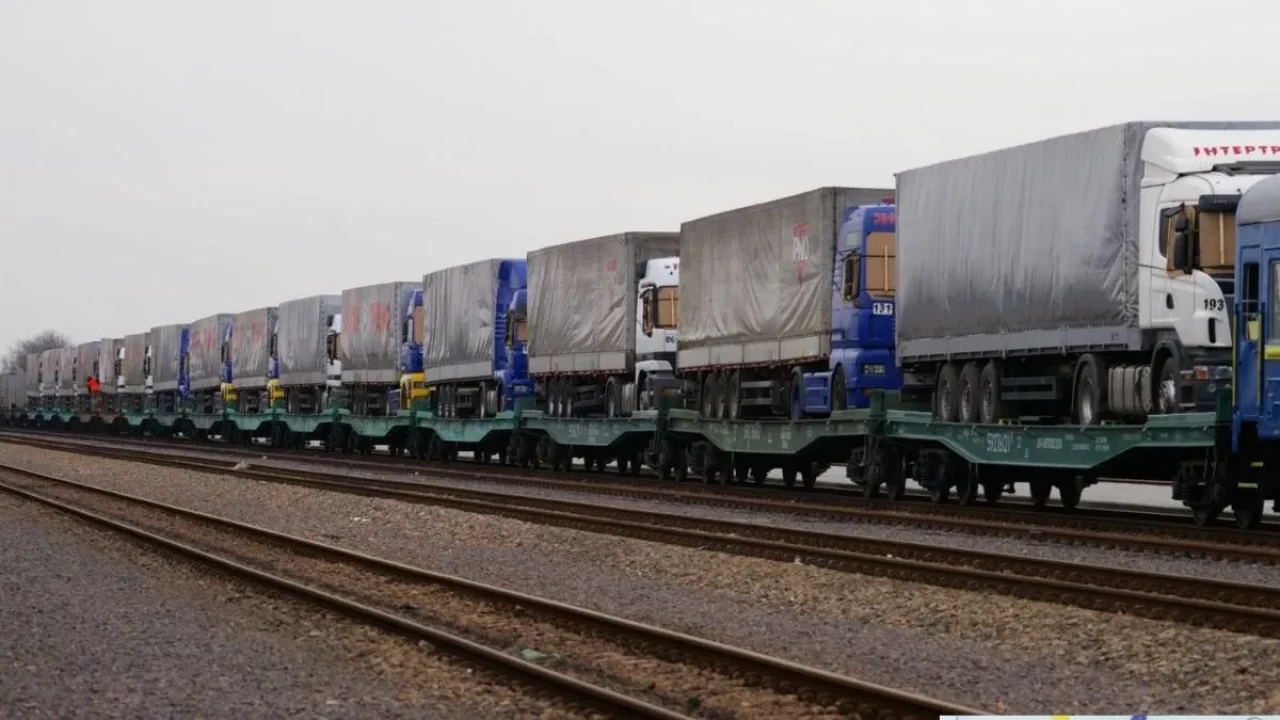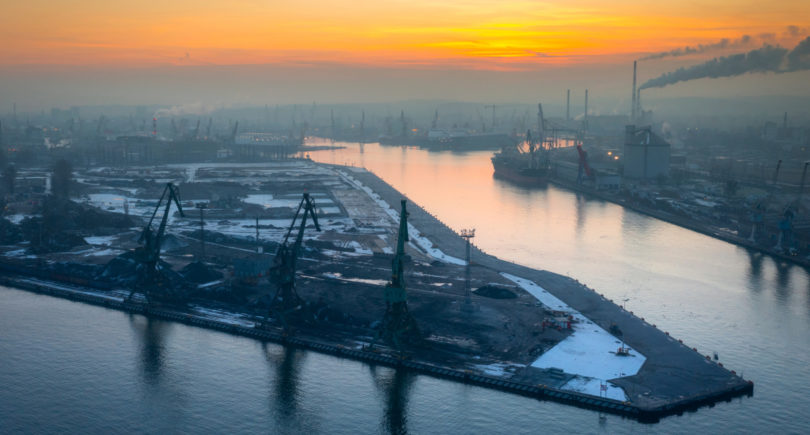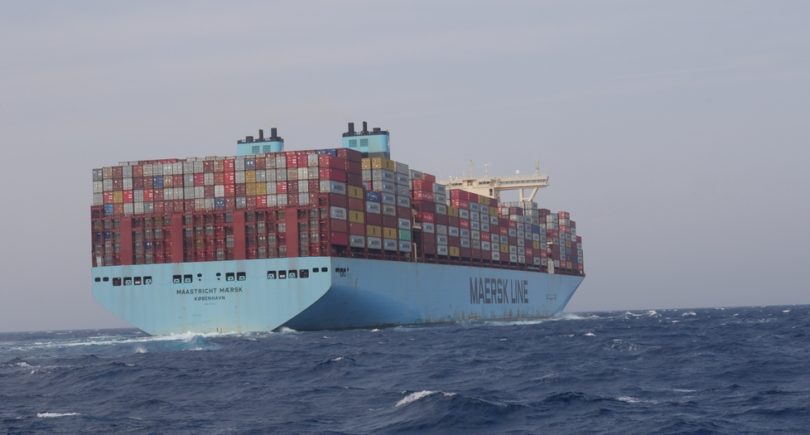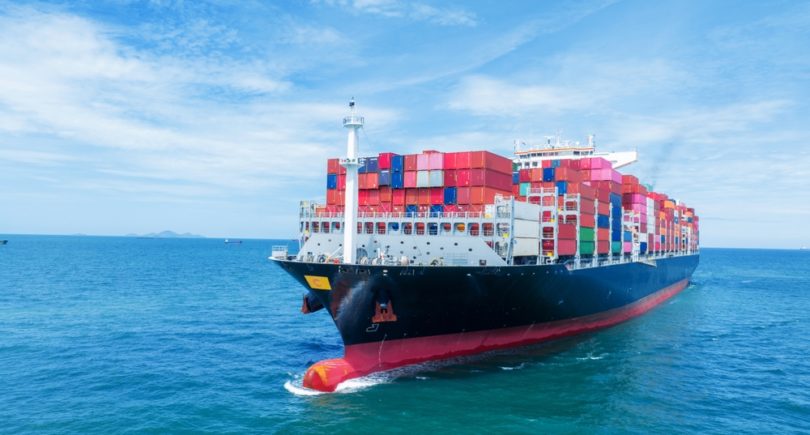
Posts Infrastructure cargo transportation 2276 19 December 2023
The Ukrainian economy has already suffered more than $1 billion in losses
The border blockade has already caused the Ukrainian economy at least $1 billion in losses and continues to generate them every day. The situation has slightly worsened – while in November only Polish truckers blocked the border, in December the Slovaks joined them. At the same time, there are some improvements – on December 11, the crossing point Jagodin – Dorohusk on the border with Poland was unblocked, and the Slovaks stopped their action. However, this point was blocked again on February 18. A possible comprehensive solution to the problem is in the hands of the Polish local authorities (who may revoke the protest permits) and the new Polish government, which is determined to quickly resolve the current situation at the border.
Who is blocking the Ukrainian border and where?
Although a number of measures have already been taken to ease the border blockade, certain factors only exacerbate the situation. At the moment, Ukraine’s border is blocked to a greater or lesser extent by several neighboring countries.
- Polish truckers have been blockading the checkpoints since November 6. On December 11, the Jahodyn-Dorohusk checkpoint was unblocked. The local authorities withdrew permission to hold the protest. The formal pretext was that the action was detrimental to Polish business. However, at the end of last week, a local Polish court overturned the ban on the protest in Dorogusk, authorizing the resumption of the blockade of the Jagodin-Dorogusk checkpoint from December 18. Polish farmers from the United Village organization joined the action. They complain about uncontrolled imports of grain from Ukraine and demand the suspension of imports of sugar from our country, payment of direct subsidies and preservation of compensation for excise duty on fuel, as well as compensation for corn producers. Another farmers’ organization – Deceived Village – has been participating in the blockade of the Shehyni – Medyka road crossing with similar demands since 22 November.
- Slovak transport workers joined the action on December 1 (they blocked the Vishne-Nemetske-Uzhhorod border crossing point), stopped the blockade on December 4, but resumed their action again on December 11. However, on December 13-14, the Slovaks first partially and then completely unblocked the border.
- Since December 11, Hungarian road carriers have joined the blockade, but they do not block the movement of trucks.
At the moment, four Ukrainian-Polish checkpoints are blocked. As of the end of last week, 2,600 trucks were stuck at the blocked points only in the direction of Ukraine. The situation is worsened by the fact that Poland has strengthened control over Ukrainian carriers, increasing the number and rigor of their inspections. In other words, Polish customs officers can artificially slow down the passage of Ukrainian trucks even if the checkpoint is unblocked.
Current economic implications
The results of the blockade in November only on trade with Poland showed the following:
- export – decrease by 39.3%, to 282.3 thousand tons;
- imports – decrease by 44.6%, to 511.6 thousand tons.
The blockade hit Ukrainian exports hard, but even harder on imports, including critical ones. According to the State Customs Service, the value of taxable imports fell by 15% – to $4.3 billion in November from $5.1 billion in October.
According to Dragon Capital analysts, among negative aspects of the blockade of the Ukrainian-Polish border:
- decrease in state budget revenues (customs revenues in November have already decreased by 19%),
- losses for producers focused on the European market (food industry, woodworking and production of electrical products for the automotive industry),
- shortage of components and energy resources (autogas),
- delay of humanitarian aid, financial losses of companies due to queues.
According to preliminary calculations, it appears that the blockade of road crossings could cost the entire Ukrainian economy at least $1 billion. But analysts note that at the moment the direct losses of Ukrainian exporters should not be more than $300 million.
“Taking into account that Ukrainian commodity exports in monetary terms amount to approximately $2.8bn per month and only a part of exports goes by road through Poland and Slovakia, the direct losses of Ukrainian exporters from the transportation blockade should not have exceeded $300m. At the same time, the situation with the transportation blockade led to an increase in the cost of the entire logistics chain for all exporters. Moreover, such frankly ‘unfriendly’ actions from the countries supporting Ukraine were perceived as a strong psychological blow amid all the difficulties of wartime,» Dmytro Churin, director of the analytical department at investment company Eavex Capital, explained.
The opening of the Yagodin – Dorogusk checkpoint made it possible to partially reduce the queue – on December 14, 1.2 thousand freight vehicles crossed this checkpoint in both directions, as well as to reduce transportation tariffs.
“After unblocking, transportation prices did not fall significantly as we would have liked. At the moment, I’m seeing a drop of about 15-20%,” Diana Piloyan, transport logistics expert, notes.
Alternative export routes
Ukrainian carriers and shippers have very few options, one of them is to overpay and increase delivery time by redirecting trucks to road crossings on the borders with Hungary and Romania.
“Under the blocking conditions, the compensating factor was the reorientation of the import of imported goods to unblocked checkpoints, the transportation of goods by smaller modes of transport and a gradual reorientation to the railway. An important compensation for possible potential losses was the growth of exports via the sea corridor,” people’s deputy Yaroslav Zheleznyak, notes.
There is also a railroad option, as Ukrainian Railways (UZ) is trying to find its own benefit/niche in the current situation by transporting contrailer trains with trucks through the Izov-Grubieszów border crossing point. The first such train – 23 platforms on which 13 tractors with semi-trailers were loaded – arrived at the Polish border on December 7 and arrived in Poland on December 11. According to some reports, transportation of one truck in this way will cost €1500. UZ plans to make such transportation regular.
On the other hand, the possibilities of this mechanism are significantly limited and insufficient for the queue at the border to quickly “dissolve”. According to some estimates, the number of specialized platforms does not exceed 90, which is enough for 3-4 trains. A rough calculation, taking into account the availability of platforms and the time of one trip (5 days) shows that the maximum utilization of all UZ rolling stock will make it possible to transport approximately 250 trucks with trailers one way for a month. It is not difficult to calculate that under the same conditions, one train of 23 platforms traveling to Poland and back will make only three turnarounds per month and will be able to transport about 40 trucks with trailers from Ukraine. Compared to several thousand blocked trucks at the border, this is a drop in the ocean.
Hope for a political solution
The Ukrainian authorities pinned high hopes on the formation of a new government in Poland. On December 11, the Polish Sejm elected Donald Tusk as the country’s new prime minister. It is politically favorable for Tusk to show the result quickly. And already on December 12 it was announced that the new government has found a way to immediately unblock the border with Ukraine and at the same time to take into account the interests of Polish carriers. However, it is not clear yet what this solution implies and how much it will satisfy Polish protesters.
The main goal of the protesters is to return to the system of permits for cargo transportation for Ukrainian carriers, which existed before the war, and this is an unacceptable condition neither for Ukraine nor for the European Union.
Probably, the most effective measure is the withdrawal by the local authorities of Poland of the permits for the protest – issued before January and February 2024. However, in some cases, the protesters want to obtain a permit to protest until March of the next year. In such a situation, the only thing left to do is to wait for the intervention of the central authority – the new Polish government.
Perhaps a solution to the blockade problem will be found during direct negotiations of Ukrainian business with representatives of associations of Polish carriers and heads of companies blocking the Ukrainian-Polish border. The Poles claim for themselves the exclusive right to use the «Ugrynov – Dolgobychev» point. And if by Wednesday, December 20, there will be no Ukrainian trucks in line at this checkpoint, the protesters promise to end the blockade of all highway crossings.
On the whole, the situation is still absurd – a transportation minority is blocking the borders of a warring country, whose security and very existence critically depend on imports and economic stability on exports. And for more than a month neither Polish nor Ukrainian authorities can find a solution to several dozen politically motivated protesters (the organizer of the action represents a pro-Russian political force).




